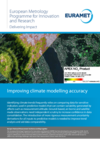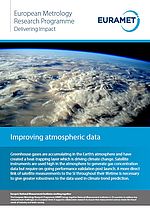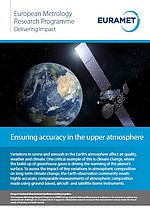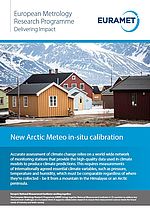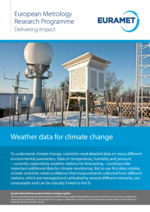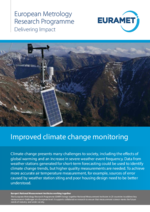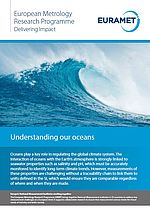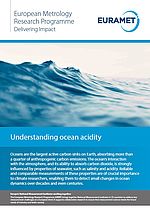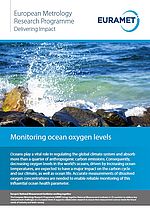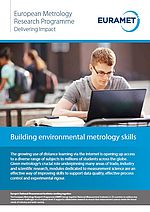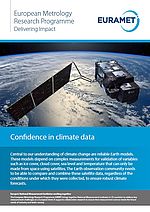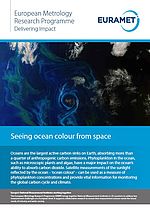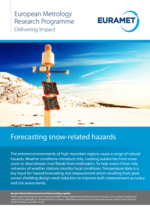Please type a search term (at least two characters)
Case Studies: Understanding Climate Change

Monitoring and modelling the Earth’s climate requires the measurement of a wide range of climate parameters, and variables that need to be comparable irrespective of the individual location or time of data acquisition and the instrumentation or method used.
At the heart of this challenge is ensuring traceability to the SI units. Daily satellite- and surface-based measurements of climate variables require robust quality assurance, while climate records covering many decades demand rigorous methods for the assignment of measurement uncertainties.
Climate measurement methods and instrumentation have been developed over decades by organisations and research groups worldwide and measurement comparability becomes increasingly important as international and national policymakers seek to implement climate protocols, agreements and regulation.
Improving climate modelling accuracy
Identifying climate trends frequently relies on comparing data for sensitive indicators used in predictive models that can contain variability generated by affects such as measurement altitude. Ground-based, air-borne and satellite
made observations need independent scrutiny to increase confidence in data consolidation. The introduction of more rigorous measurement uncertainty derivations for all inputs to predictive models is needed to improve trend
analysis and aid data comparability.
Improving atmospheric data
The EMRP project Spectral reference data for atmospheric monitoring established a European spectroscopy infrastructure enabling traceable measurements of spectral line data under well-controlled conditions.
This will support improved accuracy in the measurements used to remotely monitor specific substances in the atmosphere, including gases that are important for assessing climate change and pollution levels.
Ensuring accuracy in the upper atmosphere
Variations in ozone and aerosols in the Earth’s atmosphere affect air quality, weather and climate. One critical example of this is climate change, where the build-up of greenhouse gases is driving the warming of the planet’s surface. To assess the impact of tiny variations in atmospheric composition on long-term climate change, the Earth observation community needs highly-accurate, comparable measurements of atmospheric composition made using ground-based, aircraft- and satellite-borne instruments.
Taking calibration to the extremes
Accurate assessment of climate change relies on a world-wide network of monitoring stations that provide the high-quality data used in climate models to produce climate predictions. This requires measurements of internationally agreed essential climate variables, such as pressure, temperature and humidity, which must be comparable regardless of where they’re collected – be it from a mountain in the Himalayas or an Arctic peninsula.
Weather data for climate change
To understand climate change, scientists need detailed data on many different environmental parameters. Data on temperature, humidity and pressure – currently captured by weather stations for forecasting – could provide important additional data for climate monitoring. But to use this data reliably, climate scientists need confidence that measurements collected from different stations, which are managed and calibrated by several different networks, are comparable and can be robustly linked to the SI.
Improved climate change monitoring
Climate change presents many challenges to society, including the effects of global warming and an increase in severe weather event frequency. Data from weather stations generated for short-term forecasting could be used to identify climate change trends, but higher quality measurements are needed. To achieve more accurate air temperature measurement, for example, sources of error caused by weather station siting and poor housing design need to be better understood.
Understanding our oceans
Oceans are the largest active carbon sinks on Earth, absorbing more than a quarter of anthropogenic carbon emissions. The ocean’s interaction with the atmosphere, and its ability to absorb carbon dioxide, is strongly influenced by properties of seawater, such as salinity and acidity. Reliable and comparable measurements of these properties are of crucial importance to climate researchers, enabling them to detect small changes in ocean dynamics over decades and even centuries.
Salinity & temperature
Oceans play a key role in regulating the global climate system. The interaction of oceans with the Earth’s atmosphere is strongly linked to seawater properties such as salinity and pH, which must be accurately monitored to identify long-term climate trends. However, measurements of these properties are challenging without a traceability chain to link them to units defined in the SI, which would ensure they are comparable regardless of where and when they are made.
Acidity
Oceans are the largest active carbon sinks on Earth, absorbing more than a quarter of anthropogenic carbon emissions. The ocean’s interaction with the atmosphere, and its ability to absorb carbon dioxide, is strongly influenced by properties of seawater, such as salinity and acidity. Reliable and comparable measurements of these properties are of crucial importance to climate researchers, enabling them to detect small changes in ocean dynamics over decades and even centuries.
Oxygen levels
Oceans play a vital role in regulating the global climate system and absorb more than a quarter of anthropogenic carbon emissions. Consequently, decreasing oxygen levels in the world’s oceans, driven by increasing ocean temperatures, are expected to have a major impact on the carbon cycle and our climate, as well as ocean life. Accurate measurements of dissolved oxygen concentrations are needed to enable reliable monitoring of this influential ocean health parameter.
Building environmental metrology skills
The growing use of distance learning via the internet is opening up access to a diverse range of subjects to millions of students across the globe. Given metrology’s crucial role underpinning many areas of trade, industry and scientific research, modules dedicated to measurement science are an effective way of improving skills to support data quality, effective process control and experimental rigour.
Confidence in climate data
Central to our understanding of climate change are reliable Earth models. These models depend on complex measurements for validation of variables such as ice cover, cloud cover, sea level and temperature that can only be made from space using satellites. The Earth observation community needs to be able to compare and combine these satellite data, regardless of the conditions under which they were collected, to ensure robust climate forecasts.
Seeing ocean colour from space
Oceans are the largest active carbon sinks on Earth, absorbing more than a quarter of anthropogenic carbon emissions. Phytoplankton in the ocean, such as microscopic plants and algae, have a major impact on the ocean’s ability to absorb carbon dioxide. Satellite measurements of the sunlight reflected by the ocean – ‘ocean colour’ – can be used as a measure of phytoplankton concentrations and provide vital information for monitoring the global carbon cycle and climate.
Forecasting snow-related hazards
The extreme environments of high mountain regions cause a range of natural hazards. Weather conditions introduce risks, creating avalanches from snow cover or downstream river floods from meltwaters. To help assess these risks, networks of weather stations monitor local conditions. Temperature data is a key input for hazard forecasting, but measurement errors resulting from poor sensor shielding design need reduction to improve both measurement accuracy and risk assessments.

